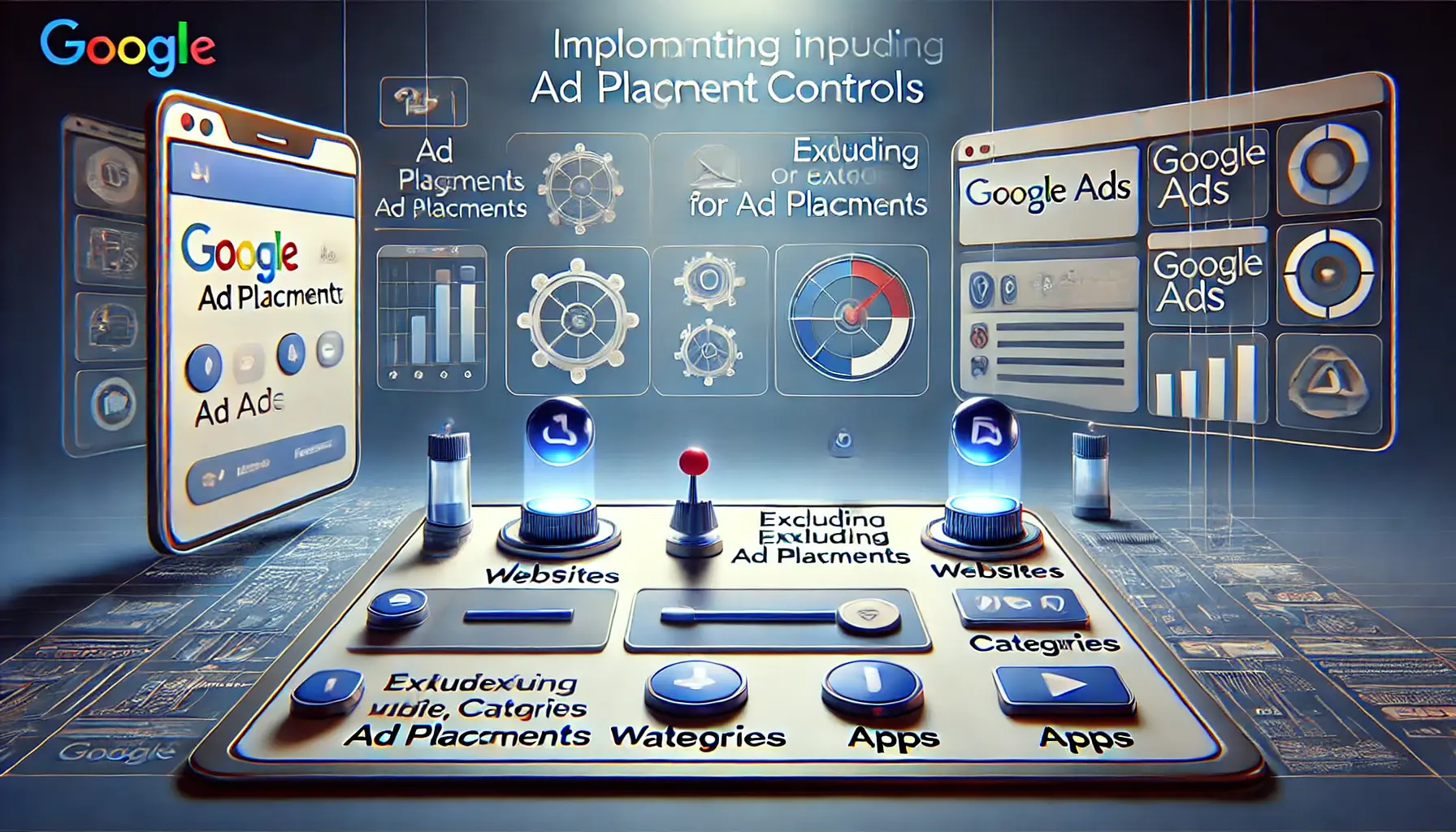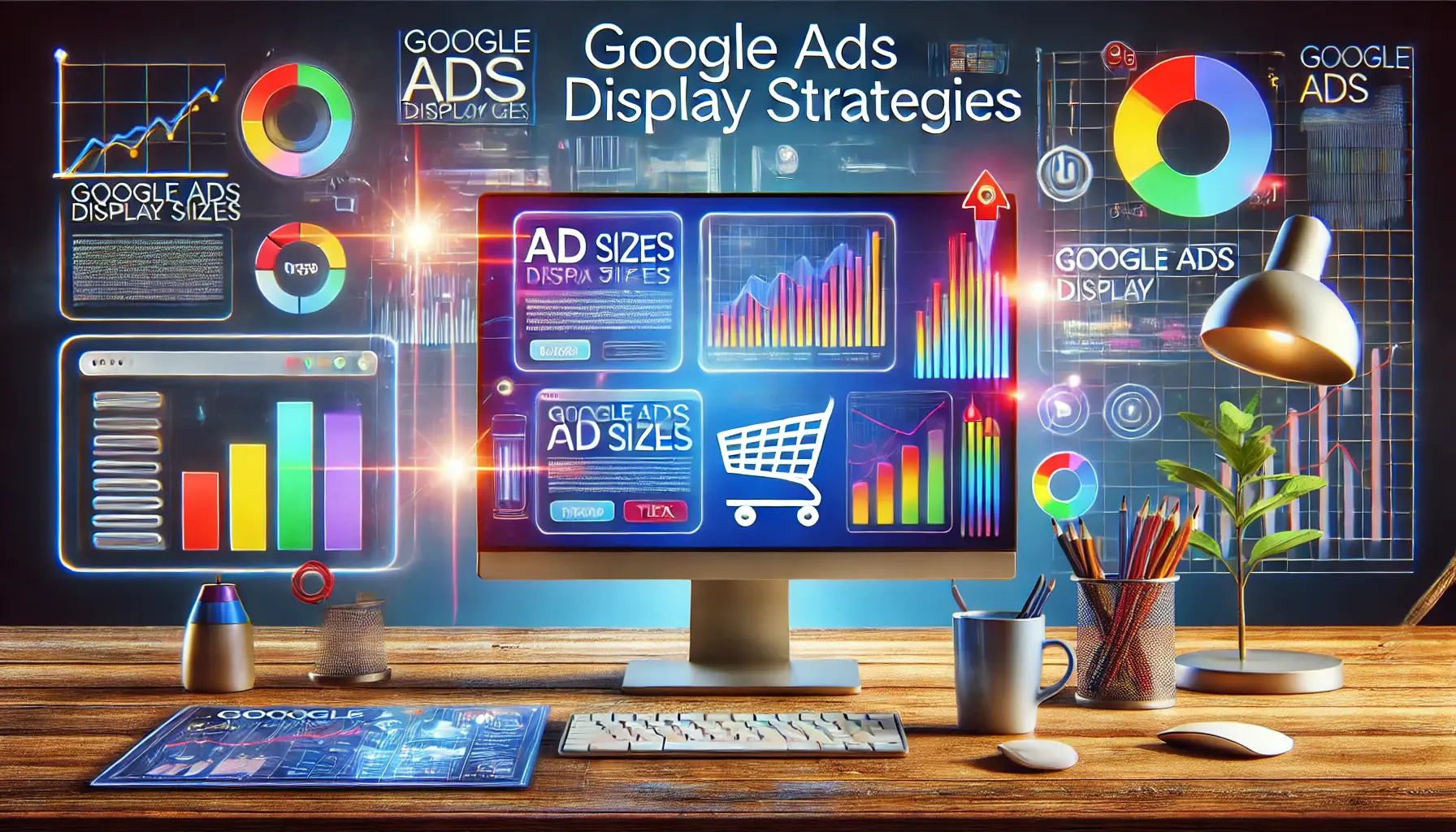In today’s digital advertising landscape, ensuring that your brand’s message appears in appropriate and relevant contexts is crucial.
This practice, known as brand safetyMeasures to ensure that advertisements do not appear alongside harmful or inappropriate content., involves protecting your brand from associations with content that could harm its reputation.
When it comes to Google Display AdsGoogle's platform for displaying visual ads across websites and apps in its network., implementing effective brand safety measures is essential to maintain consumer trust and achieve your marketing objectives.
- Understanding Brand Safety in Google Display Ads
- Identifying Risks to Brand Safety
- Strategies to Ensure Brand Safety in Campaigns
- Monitoring and Adjusting Brand Safety Measures
- Leveraging Google’s Brand Safety Tools and Features
- Summing Up: Ensuring Brand Safety in Google Display Ads
- Frequently Asked Questions About Brand Safety in Google Display Ads
Understanding Brand Safety in Google Display Ads
Brand safety is defined by the strategy and tools applied to avoid having ads displayed alongside content that could harm your brand’s image.
In simpler terms, for Google Display Ads, it means ensuring that your advertisements appear on sites and applications that align with your brand’s values and standards.
Why is brand safety important for your campaigns?
Consider this: what if your ad appeared next to inappropriate or highly controversial content?
Such associations could result in lost consumer trust and potential harm to your brand’s reputation.
Google provides several tools and settings within its advertising platform to help you manage brand safety.
By utilizing these features, you can control where your ads appear, thereby safeguarding your brand’s image.

A modern and professional depiction of brand safety in digital advertising, emphasizing security and trust.
What Is Brand Safety and Why Is It Important?
Brand safety refers to the steps taken to prevent your ads from showing up in contexts that could harm your brand’s reputation, such as around violent content, adult-oriented content, or other sensitive subjects.
Maintaining brand safety is crucial because it:
- Protects Brand Reputation: Prevents your brand from being associated with inappropriate content.
- Maintains Consumer Trust: Ensures that your audience continues to have confidence in your brand.
- Enhances Ad Effectiveness: Ads served in the right environment resonate better with your target audience.

A balanced representation of how brand safety positively affects campaign performance in digital advertising.
How Brand Safety Affects Campaign Performance
Brand safety can significantly impact your ad campaigns.
Ads that appear in unsuitable places can create negative associations with your brand and reduce marketing effectiveness.
On the other hand, maintaining brand safety can:
- Improve Engagement Rates: Users are more likely to interact with ads displayed in trustworthy environments.
- Increase ROI: Effective brand safety measures contribute to better campaign performance, resulting in higher ROI.
- Ensure Brand Loyalty: Consistent placement in appropriate contexts reinforces positive perceptions of your brand.

A representation of how Google Display Ads contributes to ensuring brand safety through its platform tools and settings.
The Role of Google Display Ads in Ensuring Brand Safety
Google Display Ads provides several tools that help advertisers maintain brand safety.
These include:
- Content Exclusions: Allows you to exclude your ads from appearing in certain types of content, such as sensitive social issues or mature audiences.
- Site Category Options: Enables you to opt out of specific categories of websites that may not align with your brand’s values.
- Placement Exclusions: Lets you exclude specific websites or apps where you do not want your ads to appear.
By effectively using these tools, you can ensure that your Google Display Ads contribute positively to your brand’s image and broader marketing goals.
Brand safety ensures your ads appear on platforms that align with your values, safeguarding consumer trust and reputation.

A representation of identifying risks to brand safety in digital advertising, focusing on the investigative process and potential threats.
Identifying Risks to Brand Safety
In the dynamic world of digital advertising, it’s essential to recognize the potential threats that can compromise your brand’s integrity.
By understanding these risks, you can take proactive measures to safeguard your brand’s reputation.

A representation of common threats to brand safety in digital advertising, focusing on risks like fake news, ad fraud, and inappropriate content.
Common Threats to Brand Safety in Digital Advertising
Several prevalent risks can jeopardize brand safety:
- Inappropriate Content: Ads may appear alongside content featuring violence, adult themes, or hate speech, tarnishing your brand by association.
- Fake News and Misinformation: Associating with platforms that spread false information can erode consumer trust in your brand.
- Ad Fraud: Invalid traffic and fraudulent clicks waste ad spend and distort campaign performance metrics.
- Unsafe User-Generated Content: Sites with little to no content moderation may display your ads near objectionable or harmful user posts.

A representation of unsafe content examples in Google Display Ads, highlighting the risks of ad misplacement next to harmful content.
Examples of Unsafe Content in Google Display Ads
To illustrate, consider these scenarios where ads might be placed inappropriately:
- Violent or Graphic Content: Ads appearing alongside news articles covering violence or other graphic material.
- Adult Material: Ads placed on websites hosting explicit content.
- Hate Speech or Offensive Language: Ads shown near content promoting discrimination or derogatory language.
- Unverified Health Claims: Ads displayed next to content advocating unproven medical treatments or misinformation.

A visual representation of how ad placements and competition can affect a brand’s reputation, with contrasting ad placements beside positive and negative content.
How Competitors and Ad Placements Can Impact Brand Reputation
Ad placements require strategic consideration to avoid potential pitfalls:
- Competitor Ad Placement: Your ads might appear alongside or directly after a competitor’s ad, diluting your brand message and potentially confusing consumers.
- Low-Quality Site Placement: Ads displayed on websites with poor content quality or questionable reputations can negatively impact your brand.
- Overexposure: Excessive frequency of the same ad in one digital space can lead to ad fatigue, annoying potential customers.
By understanding these risks, you can implement effective brand safety measures in your Google Display Ads campaigns, ensuring your brand’s integrity remains intact and consumer trust is upheld.
- Beware of inappropriate content, fake news, and ad fraud.
- Proactively address unsafe user-generated content risks.

A visual representation of strategies for ensuring brand safety in digital campaigns, focusing on the use of tools like exclusion lists and content filters.
Strategies to Ensure Brand Safety in Campaigns
Maintaining brand safety in your digital advertising campaigns is essential to protect your brand’s reputation and build consumer trust.
Implementing effective strategies can help you avoid associations with inappropriate content and ensure your ads appear in suitable environments.

A visual representation of using exclusion lists in digital advertising to filter out harmful or irrelevant content and ensure brand safety.
Using Exclusion Lists to Avoid Inappropriate Content
Blocklists, or lists of placements where your ads cannot show, prevent your advertisements from appearing on individual webpages or alongside other content types that do not align with your values.
By carefully managing blocklistsLists of websites or placements where ads are explicitly blocked from appearing., you can:
- Prevent Ad Misplacement: Keep your brand off potentially damaging websites.
- Uphold Brand Integrity: Ensure all ad placements align with your brand standards and audience expectations.
Regularly updating your exclusion lists is crucial, as the digital landscape evolves rapidly, and new sites or content may emerge that you wish to avoid.

A visual representation of implementing ad placement controls in Google Ads, highlighting the customization of ad placements through various settings.
Implementing Ad Placement Controls in Google Ads
Google Ads offers several controls to manage where your ads are displayed:
- Site Category Options: Exclude entire categories of websites that may not be suitable for your brand, such as those related to sensitive topics.
- Content Exclusions: Prevent your ads from appearing alongside content types such as live streaming videos or embedded YouTube videos that may not meet your brand safety requirements.
- Placement Exclusions: Manually exclude specific websites, apps, or channels on which you do not want your ads to appear.
These controls allow you to fine-tune where your ads appear to best meet your brand safety needs.

A visual representation of using keyword exclusions to enhance protection in digital advertising campaigns by filtering harmful or irrelevant keywords.
Leveraging Keyword Exclusions for Enhanced Protection
Keyword exclusions enable you to prevent your ads from showing up in search queries or content containing specific terms that are irrelevant or detrimental to your brand.
By setting negative keywordsTerms excluded from search campaigns to prevent ads from showing in unwanted contexts., you can:
- Enhance Ad Relevance: Ensure your ads are shown in contexts that are pertinent to your products or services.
- Protect Brand Image: Avoid associations with topics or content that could negatively impact your brand’s reputation.
Regularly reviewing and updating your negative keyword list is important to adapt to changing trends and language use.

A visual representation of working with trusted ad partners to ensure safer ad placements in digital advertising.
Working with Trusted Ad Partners for Safer Placements
Working with reputable advertising partners and networks significantly enhances brand safety.
Trusted partners usually have strict content policies and advanced tools to ensure that ads are placed in appropriate contexts.
When choosing ad partners, consider:
- Reputation and Track Record: Choose partners known for maintaining high standards in ad placements.
- Brand Safety Tools Available: Opt for partners offering robust brand safety features, including real-time monitoring and content filtering.
By clearly communicating with your ad partners and setting expectations, you can ensure that your brand’s safety requirements are consistently met.
By implementing these strategies, you can create a safer advertising environment for your brand, fostering trust and credibility with your audience.
- Regularly update exclusion lists.
- Leverage Google Ads tools like placement and category exclusions.

A visual representation of monitoring and adjusting brand safety measures in digital advertising, emphasizing the use of analytics and performance tracking tools.
Monitoring and Adjusting Brand Safety Measures
Ensuring brand safety in your digital advertising campaigns is an ongoing process.
Regular monitoring and timely adjustments are crucial to maintain your brand’s integrity and adapt to the ever-changing digital landscape.

A visual representation of regularly reviewing campaign performance and ad placements, focusing on analytics and optimization.
Regularly Reviewing Campaign Performance and Ad Placements
Consistent evaluation of your ad campaigns helps identify potential brand safety issues.
By analyzing where your ads appear and how they perform, you can:
- Detect Inappropriate Placements: Identify whether your ads are showing next to unsuitable content.
- Assess Ad Effectiveness: Determine which placements yield the best results and which may harm your brand’s image.
Using tools such as placement reports provided by Google Ads can give detailed insights into the websites and apps showing your ads and allow for more informed decisions regarding necessary changes.

A visual representation of updating exclusion lists and keywords based on insights, symbolizing the optimization of ad targeting.
Updating Exclusion Lists and Keywords Based on Insights
As you gather data from campaigns, revisit your exclusion lists and negative keywords to refine and update them:
- Refine Exclusion Lists: Add sites or categories that have proven detrimental to your brand.
- Adjust Negative Keywords: Add words or expressions that trigger ads in inappropriate contexts.
Updating brand safety measures regularly ensures you are prepared for evolving trends and potential risks.

A visual representation of staying informed about industry trends and policy changes, symbolized by news feeds, updates, and data analytics.
Staying Informed About Industry Trends and Policy Changes
The digital advertising landscape is continually evolving, with frequent updates to policies and industry standards.
Staying informed allows you to:
- Adapt to New Guidelines: Ensure your campaigns comply with the latest advertising policies.
- Implement Best Practices: Apply current industry standards to enhance brand safety.
Subscribe to industry newsletters, attend webinars, and read reputable marketing blogs to stay updated on all relevant developments.
Through active monitoring of your campaigns, updating strategies based on insights, and staying current with changes in the industry, your brand safety measures will remain robust, protecting your brand’s reputation in this ever-changing digital advertising space.
Regular reviews of ad placements and performance are key to maintaining brand safety in a dynamic environment.

A visual representation of leveraging Google’s brand safety tools in digital advertising, emphasizing the control and protection of brand reputation.
Leveraging Google’s Brand Safety Tools and Features
Google offers a suite of tools designed to help advertisers maintain brand safety across its platforms.
Understanding and effectively utilizing these features can significantly enhance your control over ad placements and protect your brand’s reputation.

A visual representation of understanding and using Google’s brand safety controls, with tools to protect ad placements from inappropriate content.
Understanding Google’s Brand Safety Controls
Google provides several controls to manage where and how your ads appear:
- Content Exclusions: Allows you to exclude your ads from showing next to certain content types, such as sensitive social issues or mature audiences.
- Site Category Options: Enables you to opt out of entire categories of websites that may not align with your brand’s values.
- Placement Exclusions: Gives you the ability to manually exclude specific websites, apps, or channels where you prefer your ads not to appear.
These controls empower you to tailor your ad placements, ensuring they align with your brand safety requirements.

A visual representation of implementing brand settings in Search and Performance Max campaigns, emphasizing the control over brand-related traffic.
Implementing Brand Settings in Search and Performance Max Campaigns
In 2024, Google introduced brand settings for Search and Performance Max campaigns, providing advertisers with enhanced control over brand-related traffic:
- Brand Inclusions: Allows your campaign to serve ads exclusively for queries associated with selected brands, ensuring focus on relevant brand traffic.
- Brand Exclusions: Prevents your campaign from serving ads for queries related to specific brands you wish to avoid, helping to filter out unwanted brand associations.
These settings enable more precise targeting, aligning your campaigns with your brand safety objectives.

A visual representation of utilizing brand guidelines to ensure consistent ad representation across digital ad formats.
Utilizing Brand Guidelines for Consistent Ad Representation
To ensure consistent representation of your brand across various ad formats, Google introduced brand guidelines features:
- Font and Color Controls: Specify your brand’s fonts and colors to maintain visual consistency across autogenerated videos on YouTube and responsive display ad formats.
By setting these parameters, you ensure that your brand’s visual identity is accurately represented across Google’s advertising platforms.

A visual representation of staying updated with Google’s policy changes and feature enhancements in digital advertising.
Staying Updated with Google’s Policy Changes and Feature Enhancements
Google regularly updates its ad policies and launches new features that improve brand safety.
Keeping up with these changes is essential:
- Updates: Google regularly launches updates to its ad platforms, adding new tools and updating existing policies to better protect brand safety.
- Proactive Adaptation: Staying informed allows you to quickly adapt your campaigns to meet new guidelines and take advantage of improved features.
Regularly checking official announcements and support resources from Google will help you stay updated and maintain effective brand safety measures.
By using these tools and staying up-to-date with Google’s developments, you can enhance your brand safety efforts, ensuring that your ads appear in contexts that align with your brand’s values and resonate positively with your target audience.
Google’s brand settings and content exclusionsSettings in Google Ads to prevent ads from displaying next to specific types of content. offer robust options to enhance ad placement control.

A visual representation of ensuring brand safety in Google Display Ads, emphasizing tools and strategies for secure ad placements.
Summing Up: Ensuring Brand Safety in Google Display Ads
Maintaining brand safety in Google Display Ads is a critical component of any successful digital advertising strategy.
By safeguarding your brand’s reputation, you not only protect its integrity but also build trust and loyalty among your audience.
Throughout this article, we explored effective practices and tools that ensure your ads are displayed in safe, relevant environments, contributing to the overall success of your campaigns.

A visual representation of the importance of brand safety in digital advertising, with elements like shields and secure environments.
The Importance of Brand Safety
Brand safety is more than just a precaution; it’s a necessity in today’s competitive digital landscape.
By avoiding associations with inappropriate content, you can:
- Protect your brand’s reputation from potential harm.
- Maintain consumer trust by aligning ad placements with audience expectations.
- Enhance campaign performance by ensuring ads appear in suitable contexts.

A visual representation of key strategies for maintaining brand safety in digital advertising, emphasizing the use of exclusion lists and content controls.
Key Strategies for Maintaining Brand Safety
To effectively protect your brand in Google Display Ads, consider these core strategies:
- Use exclusion lists and negative keywords to filter out unwanted placements.
- Leverage Google Ads tools such as content exclusions, site category options, and placement exclusions to refine ad targeting.
- Stay up to date with evolving industry trends and policy changes to adjust your campaigns accordingly.

A visual representation of leveraging Google’s advanced tools to manage and optimize digital advertising campaigns, with icons for security and analytics.
Leveraging Google’s Advanced Tools
Google provides a suite of tools specifically designed to enhance brand safety.
By understanding and applying these features, such as the brand settings for Search and Performance Max campaigns, advertisers can achieve precise control over their ad placements, ensuring alignment with their brand values.

A visual representation of ongoing monitoring and adaptation in digital advertising, emphasizing the importance of real-time performance tracking and adjustments.
Ongoing Monitoring and Adaptation
Brand safety is not a one-time effort; it requires continuous monitoring and adaptation.
Regularly review campaign performance, update exclusion lists and keywords, and stay updated with Google’s latest tools and policies.
These steps ensure that your advertising strategy remains effective and resilient in the face of an ever-changing digital ecosystem.

A visual representation of building trust through brand safety in digital advertising, with elements symbolizing security and reputation protection.
Conclusion: Building Trust Through Brand Safety
Building strong brand safety into your Google Display Ads strategy is about trust with your audience.
By applying the techniques and tools discussed in this article, you can maintain your brand’s visibility in appropriate contexts, resonate positively with your target audience, and achieve its marketing objectives without compromising integrity.
Remember, protecting your brand is an ongoing journey.
Stay proactive, informed, and committed to best practices to ensure long-term success in your digital advertising efforts.
- Maintain brand reputation by avoiding harmful associations.
- Implement strategies to align ad placements with your values.

A visual representation of frequently asked questions about brand safety in Google Display Ads, focusing on clarity and understanding of brand safety practices.
Your campaigns can be managed by an agency specialized in Google Ads, check out our service page.
Frequently Asked Questions About Brand Safety in Google Display Ads
Brand safety is one of the most important concerns that will help maintain your brand’s reputation on Google Display Ads.
Here are some common questions and quick answers to get you started on this essential aspect of digital advertising.
Brand safety involves strategies that keep ads away from inappropriate or offensive content that might harm a brand’s reputation.
Utilize exclusion lists and Google’s placement exclusion tools to block your ads from appearing on specific websites or categories that don’t align with your brand’s values.
Google provides tools like content exclusions, site category optionsGoogle Ads settings allowing exclusion of entire website categories., and placement exclusionsOptions to exclude specific websites, apps, or channels from ad campaigns. to help advertisers control where their ads appear.
Regularly review and update your exclusion lists to adapt to the evolving digital landscape and ensure ongoing brand safety.
Yes, by using content exclusions and site category options, you can prevent your ads from appearing next to specific content types that may be unsuitable for your brand.
Negative keywords prevent your ads from showing in search queries containing specific terms, helping to avoid associations with irrelevant or harmful content.
Ad placement is crucial; ads appearing alongside inappropriate content can harm your brand’s reputation, while suitable placements can enhance it.
Ad fraud involves deceptive practices that generate invalid ad traffic, leading to wasted ad spend and potential harm to your brand’s reputation.
Regularly review your campaign performance and placement reports in Google Ads to ensure your ads appear in appropriate contexts.












